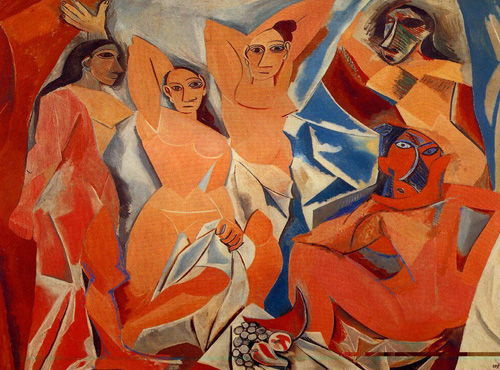The Young Ladies of
Avignon (or Les Demoiselles d'Avignon) is one of the greatest expression of modernism. Picasso changed all the
canons people had about painting and it is a landmark that caused huge impact
in the artistic circle in the twentieth century becoming the symbol of modern
art.
The painting shows a
group of naked women standing straight and who are directly looking at us, it
is said that they were a group of Spanish prostitutes who worked in a brothel I
suppose Picasso came across. No painter had attempted to create such painting
before, by that time painters used to create sober painting (such as Da Vinci´s
work) and nobody would have imagined a group of prostitutes in a room printed.
Moreover, what caught
my attention is what is beyond the painting, what did Picasso intent to make us
feel and believed throughout this piece of art? Perhaps he wanted to make us
feel like the clients of these prostitutes, which caused such a controversy at
the time or perhaps trying to express the feminine power by showing this girls standing
naked and in a way offering themselves to us.
All in all, I really
love this painting since it changed the prototypical cannon that existed at
that age; it turned the role of the viewer, therefore the centre of this
relation is not focused in the painting but in the spectator.

Diego I was reading your post and fully understood your point, but answering your question about what was Picasso tried to make us feel and believed throughout this paint, for me , was a way of expressing beauty, I mean, modernists tried to show beauty out of the concepts imposed by the Burgesses, that must be pure. These ladies are a clear example that beauty us beyond any cannon imposed and that every person is free to decide what he or she considers beautiful or not.
ResponderEliminarAll in all, I totally agree with you, when you say that Picasso was trying to generate controversy, because he did it, indeed, he made the oppressive class to appreciate what he considered beautiful.